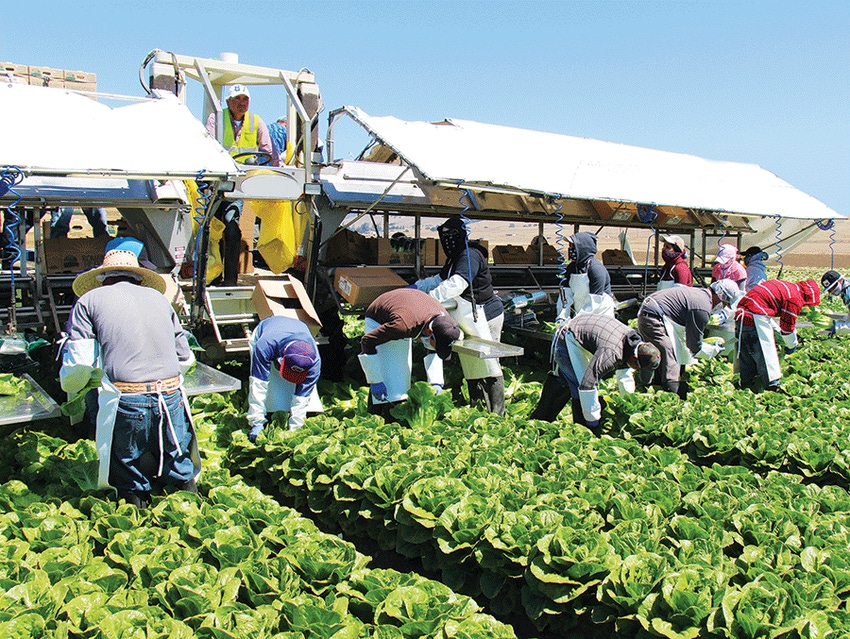August 8, 2018

This summer, leafy green vegetable growers in the greater Yuma area in southwestern Arizona and southernmost California awaited important answers from the federal government as to the source of Shiga toxin-producing Escherichia coli O157:H7 (E. coli) that earlier this year tainted romaine lettuce, causing a foodborne illness that killed five people, and sickened 210 consumers in 36 states, including one report of sickened people at an Alaska correctional facility.
By late July, the answers had not arrived.
The E. coli was traced back to Yuma area agriculture, which produces about 90 percent of the U.S. supply of winter vegetables.
The Food and Drug Administration (FDA), and the Centers for Disease Control and Prevention (CDC) are the federal agencies tasked with finding the source of the bacteria. E. coli was never found by the agencies in romaine on farms; rather, it was found in canal water months after the growing season was over.
As the next winter vegetable season nears (September through next April), the agricultural industry wants to know the source so changes can be implemented, if needed, to keep it from happening again.
“As long as we don’t know the root cause of the E.coli, this really weighs heavily on farmers,” says Dr. Paula Rivadeneira, University of Arizona Cooperative Extension food safety and wildlife specialist at the Yuma Agricultural Center. “They want an answer more than anyone.”
Her job focuses on keeping the food supply safe, in part by keeping wildlife and their feces and urine out of farm fields.
“Farmers are very upset to think that any food they provide to the public could make someone sick, especially when they complied with, and oftentimes went beyond all the required food safety regulations. They are devastated by the E. coli event,” she says.
BEST MANAGEMENT PRACTICES
Steve Alameda, president of the grower-led Yuma Fresh Vegetable Association, also grows vegetables in the Yuma area. Like other producers, he’s eager to learn the source of the E. coli.
During food safety breaches, he says, the FDA often looks for negligence, and often finds a “smoking gun” cause — something done incorrectly. But, “since the FDA came to Yuma, they haven’t found any negligence that we’re aware of,” says Alameda, owner and operator of Top Flavor Farms. He believes the romaine-E.coli outbreak occurred in eastern Yuma County.
To keep food safe, farmers and others in the farm-to-fork food system follow best management practices and other requirements under the Arizona and California Leafy Greens Marketing Agreements, including mandatory farm audits and water testing. At the federal level, the industry must meet regulatory requirements under the Food Safety Modernization Act (FSMA), which became law in 2011. Implementation of the law began in January 2018.
Dr. Rivadeneira is a lead trainer for the Produce Safety Rule under the FSMA regulation. “The winter vegetable industry has always worked hard to make sure produce is safe,” she says. “Right now, it’s frustrating because farmers don’t yet know the E. coli source. They want answers just as badly as the FDA and the CDC — their livelihoods depend on it. They don’t want anyone to get sick from consuming their products.”
Beyond meeting state and federal food safety requirements, many in the agricultural industry voluntarily add other food safety steps. Many farms employ one or more full-time food safety managers. Given its importance, food safety is often a large line item in farmer budgets.
IRRIGATION RECOMMENDATIONS
Without answers from the feds, growers feel the need to do something to enhance food safety as the new growing season approaches. Growers, other agricultural leaders, and the FDA are working with several food safety task forces, including the Yuma Safe Produce Council, which has released four new irrigation water recommendations that could be implemented voluntarily, where appropriate.
1. After plant germination, water for overhead irrigation for crop production should undergo treatment to reduce the risk of bacterial presence.
2. If irrigation water in a reach tests positive for E. coli, that water should not be used for foliar applications unless it’s treated first to reduce bacteria risk.
3. Do not use contaminated irrigation water in the reach for dust abatement unless it’s treated before the application.
4. These recommendations are recommended for upstream and downstream water takeouts until any risk of E. coli is removed.
The last major food safety breach in vegetables in the West was in 2006, when E. coli-contaminated spinach in California was possibly tied to fecal matter from feral pigs in a field. One estimate suggests the financial loss to the spinach industry from that food safety incident was about $1 billion.
You May Also Like




